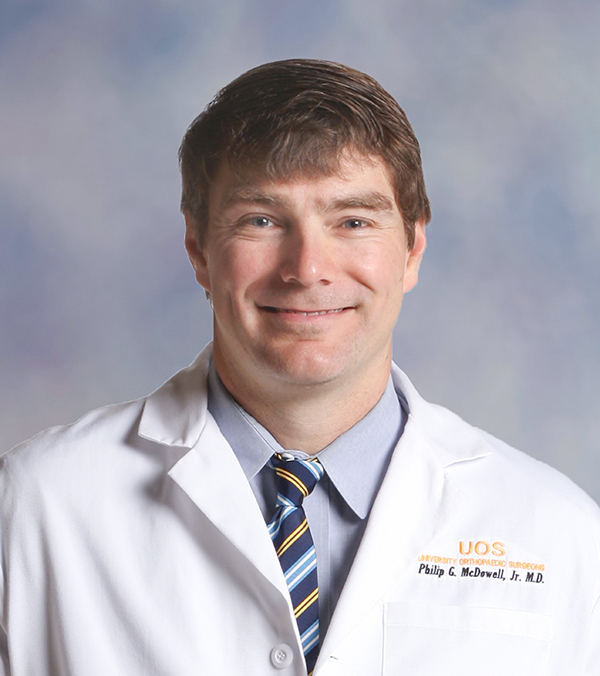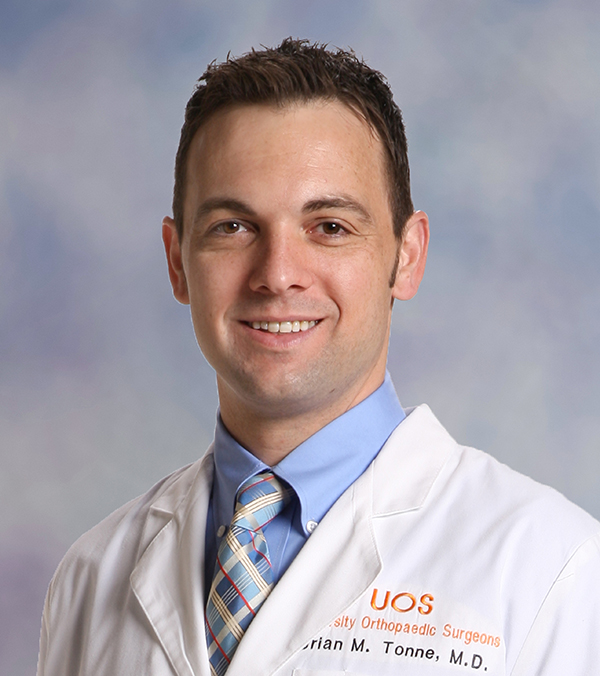Knee Pain
Knee pain can be caused by injuries, arthritis, medical conditions, infection and other problems. People of all ages can experience knee pain. Being overweight, a lack of muscle flexibility or strength, previous injuries and certain sports can add to the risk of developing knee pain.
Conditions We Treat
Your knee is made up of many important moving structures, all of which can be injured. In many cases, injuries involve more than one part of the knee. The most common signs of knee injury are pain and swelling. Many knee injuries also cause instability, which is the feeling that your knee is catching or giving way.
The most common knee injuries include:
- Dislocation
- Fractures
- Anterior Cruciate Ligament (ACL) Injuries
- Posterior Cruciate Ligament (PCL) Injuries
- Meniscal Tears
- Osteoarthritis
Nonsurgical Treatments
When appropriate, our first course of action is to treat without surgery. We offer a variety of nonsurgical treatment options, including:
- Aspiration of fluid off the knee
- Steroid injections
- Synvisc (hyaluronan) injections
- Physical therapy
- Weight loss
Mako Robotic-Arm Assisted Surgery
If you’ve been putting off your knee or hip replacement surgery, why wait? The latest robotic-arm assisted surgery is here.
Our expert orthopaedic surgeons have already performed over 200 of these minimally invasive robotic total knee and hip replacements.
Fewer complications, less time in the hospital and a shorter recovery. Get back to your life.
Surgical Options
If surgery is determined to be the best treatment, our expert team of surgeons will choose one of these options:
Knee Arthroscopy
Knee arthroscopy is a procedure where the surgeon can view the knee through a small camera inserted into small incisions and perform repairs. The procedure usually lasts 30 minutes to over an hour and is usually performed on an outpatient basis.
Arthroscopy for the knee is most commonly used for:
- Removal or repair of torn meniscal cartilage
- Reconstruction of a torn anterior cruciate ligament
- Trimming of torn pieces of articular cartilage
- Removal of loose fragments of bone or cartilage
- Removal of inflamed synovial tissue
Partial Knee Replacement
For a variety of reasons, some patients may need only a partial replacement. We provide:
- Unicompartmental (half-knee replacement)
- Patellofemoral arthroplasty (kneecap replacement)
Total Knee Replacement
Total knee replacement surgery involves removing damaged cartilage and bone from the knee and inserting new metal and plastic joint surfaces. The new surfaces include three components: a plastic patellar (knee cap) component, a metal femoral component and a metal and plastic tibial spacer. These replacement implants create a smooth surface, so the knee joint can function normally again.
Total Knee Revision
Joint replacement surgery has been widely successful, with the procedure improving the patient’s quality of life by easing or eliminating pain, improving range of motion and increasing activity levels. Even so, some implants will fail and require a second procedure, knee revision surgery, often called revision joint replacement surgery. The surgery is a complex procedure, requiring in-depth preoperative planning and specialized implants and tools.
 Joint Replacement Resources
Joint Replacement Resources
If you’re having joint replacement surgery at UT Medical Center, visit Joint Replacement Resources for more information on preparation, surgery and recovery.
Contact Info
Orthopaedic Institute1600 Accelerator Way
Knoxville, TN 37920 865-305-6970 Find a Doctor





